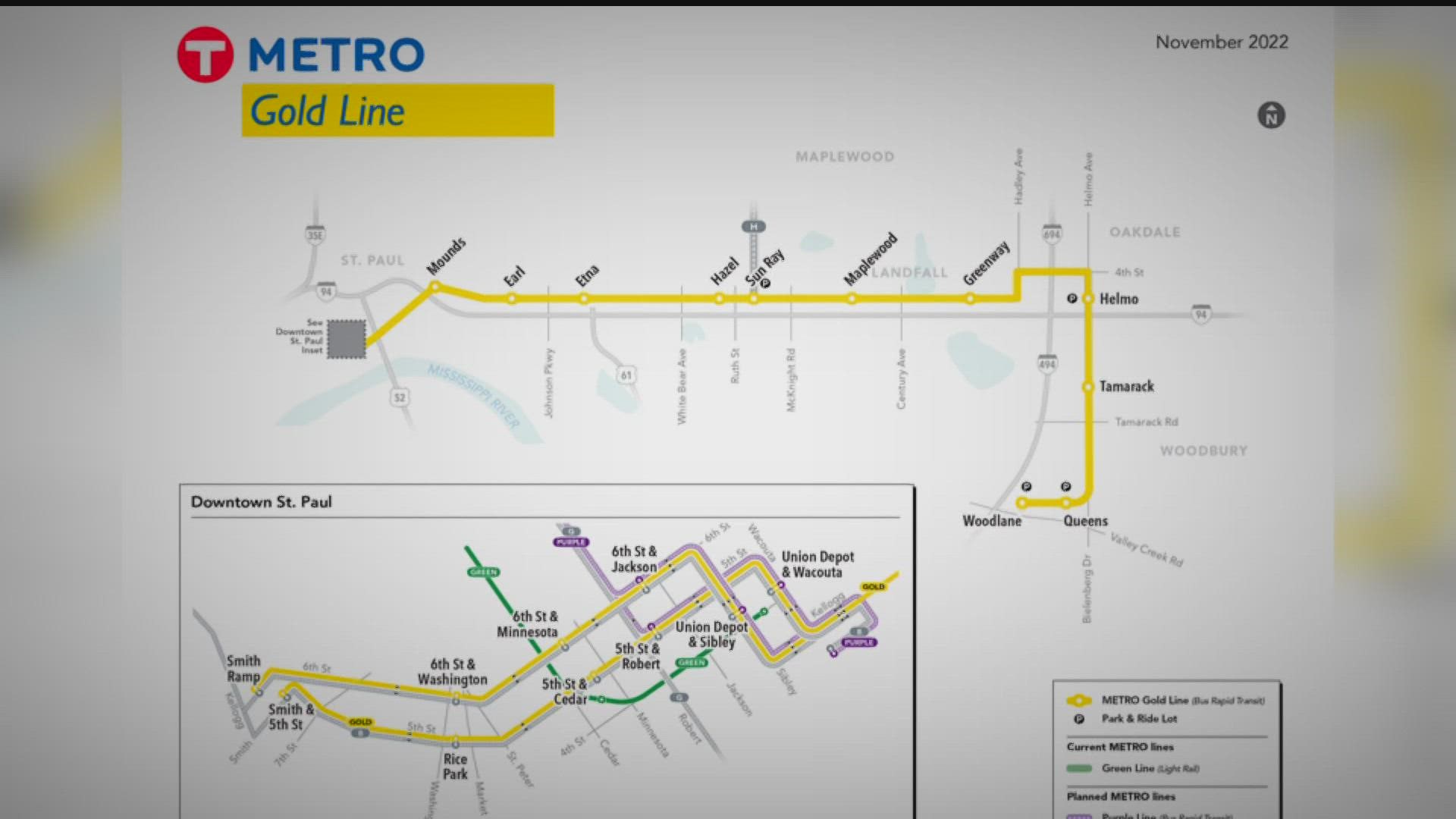ST PAUL, Minn. — For Kristen Ahart, public transportation is part of the routine.
Each morning, she takes the bus from St. Paul to Minneapolis for work, and then returns on the opposite route at the end of the day.
"I have noticed that it is packed every morning on my way to work, which I personally love," Ahart said. "It definitely brings a sense of community back to the bus instead of being a solo bus rider."
Indeed, Metro Transit ridership numbers by light rail and bus have increased significantly since the start of the pandemic, hitting a peak of nearly 150,000 average weekday rides on all modes of transportation during the busy fall season in 2022. Currently, in early 2023, those numbers sit around 120,000 per weekday, a Metro Transit spokesperson said.
However, according to Metro Transit's year-to-year ridership graph, usage numbers remain much lower than pre-pandemic totals. For most of the summer and fall of 2019, and even parts of early 2020 before COVID hit, total weekday rides hovered near or above 250,000.
With lower ridership, Metro Transit cut back on some bus service this winter, but at the same time continues to move forward with major expansion projects. That includes the Gold Line, which will run from St. Paul to Woodbury starting in 2025. The $500 million project received another approval from the St. Paul City Council on Wednesday and will be the first bus route in the state to primarily use bus-only lanes. Metro Transit also recently opened the new "D Line" last year, enhancing service from the Mall of America to Brooklyn Center.
"Our hope is that in 2023 the [higher ridership] trend continues," Metro Transit spokesperson Drew Kerr said. "Bus rapid transit lines like the Gold Line, the D-Line, are a big part of that. What we've seen in these corridors, is a recovery that's faster than what we see in other corridors with regular route bus service. On the D Line corridor, ridership has increased about 50 percent compared to this same month last year, December '22 to December '21, and we are expecting that to be the case on future BRT corridors as well."
Meanwhile, Metro Transit is also confronting issues of crime near or at transit stations, including two recent shootings in St. Paul and Minneapolis.
"We have what we call a safety and security action plan -- a 40-point plan that describes all the actions we're taking to improve public safety on transit," Kerr said. "Everything from recruiting and hiring more police officers. That's probably the biggest thing we need to do right now is getting more people out on the system."
Many other major cities across the U.S. are also dealing with issues of transit crime. In New York City, the NYPD began flooding transit areas with hundreds of officers on overtime beats, in an effort to improve public safety.
Whether it's the perception of crime, general pandemic trends, or other factors, the nation's largest public transportation systems are clearly struggling.
"Some of the transit systems are limping back to the pre-pandemic levels, but none of them are close to what they were in 2019," said Dr. P.S. Sriraj, the director of the Urban Transportation Center at the University of Illinois Chicago. "Many of the transit entities, at least in the large urban areas that I've been tracking, they are hoping they will hit 80 percent of the 2019 levels by 2025. So, that tells you a little bit about the mindset within the industry as to what is happening with ridership."
Sriraj said that ridership trends have declined as far back as 2014, around the time that ridesharing services like Uber and Lyft became more widely available.
"But the pandemic really bottomed out the ridership," Sriraj said. "Transportation is at a crossroads, if you will. The future of transit has yet to be written."
Watch more local news:
Watch the latest local news from the Twin Cities in our YouTube playlist:

